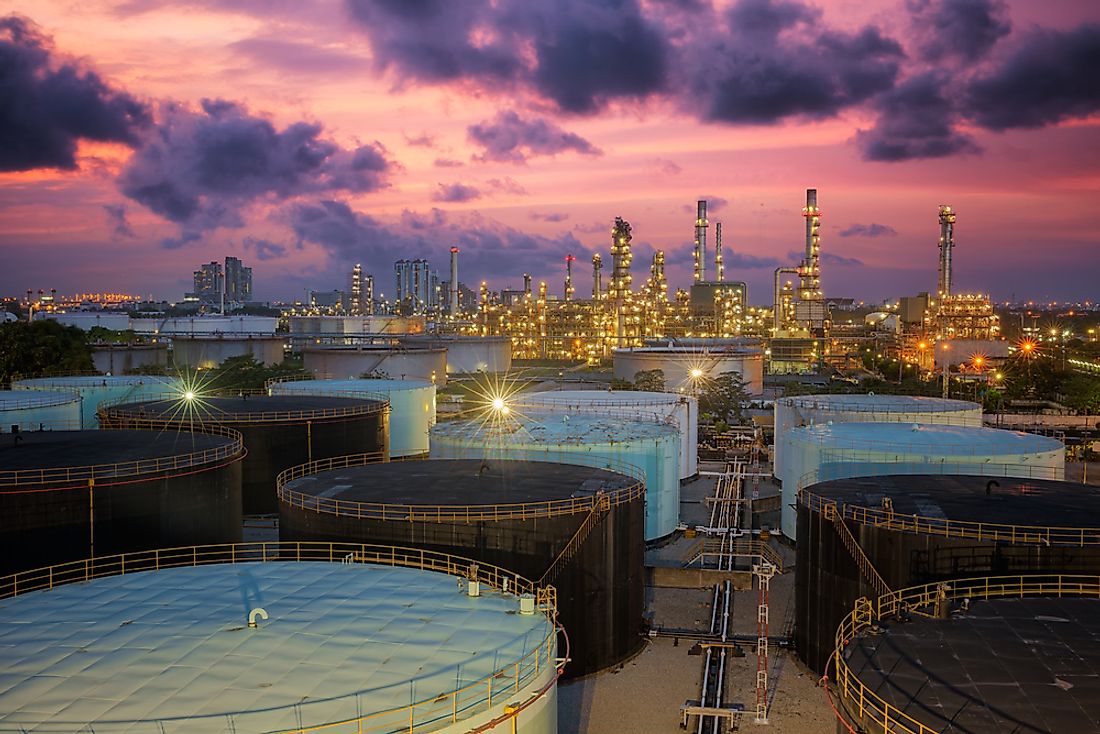What Are The Biggest Industries In Saudi Arabia?

Saudi Arabia is located in Western Asia and constitutes the bulk of the Arabian Peninsula. It covers a total land area of approximately 830,000 square miles, making it the largest sovereign state in the Middle East and the 5th largest in Asia. Saudi Arabia is separated from Egypt and Israel by the Gulf of Aqaba and is the only country with both the Persian Gulf and the Red Sea. Most parts of the country are considered an arid desert. It has a population 33.5 million people of which 50% is under the age of 25 years. According to the World Bank, Saudi Arabia is a high-income economy and is the only Arab country that is part of the G-20 major economies.
Oil and Gas Industry
Saudi Arabia has the second-largest oil reserves and is the second-largest producer in the world. The proven oil reserve is estimated to be approximately 260 billion barrels or 25% of the total world’s reserve. Saudi’s petroleum is not only plenty but also close to the earth’s surface, making exploration and drilling less expensive. Saudi Arabia is also the leading oil exporter in the world. The country has the 5th largest natural gas reserve in the world. The petroleum industry contributes about 90% of the export earnings and 87% of the budget revenue. The industry also constitutes approximately 45% of the country’s nominal GDP. The major export partners include China, Japan, India, the United States, Korea, and Singapore. The oil reserves in the country are largely state-owned and managed by Saudi Aramco. Saudi Arabia is a member of the OPEC which has capped the oil production of each member state based on the proven reserves.
Mining Industry
Apart from gas and oil resources, Saudi Arabia has the 2nd most valuable natural resources in the world including ferrous and non-ferrous minerals. The industrial minerals found in the country include bauxite, phosphate, limestone, potash, glass sand, gypsum, and perlite. Other minerals explored in the country include gold and silver. About 53 locations in the country contain gold ore with Mahd adh Dhaha as the leading gold mining area. Silver is commonly found in the northeastern region, especially near Samra, Umm Al-Hadid, Nugrah, and Umm Al-Qusor. Copper is found alongside zinc in the Central region while iron ore is found in the Swawin region. These minerals have assisted greatly in the establishment of factories, laboratories, and quarries.
Real Estate
One of the fastest growing sectors of the Saudi economy is the real estate which has continued to flourish despite the economic downturn. The growth of the sector has been supported by the introduction of real estate investment trust. The real estate plays a significant role in the non-oil economy with its transactions valued at approximately US$75 billion in 2016. The residential sector, which has been growing at a rate of 5.7% since 2004, is expected to continue with the upward trend. The expansion of this sector has since attracted some of the largest real estate consultancies such as Knight Frank and Jones Lang LaSalle have set up their offices in the country. The sector is expected to play an important role in the Saudi Vision 2030. The introduction of REITs was part of the Vision 2030 program of supporting the construction of 1.5 million homes. The demand for housing in the country is expected to increase by about 50% in the coming years
Agriculture
Over the past years, Saudi agriculture has improved despite the country being largely a desert. There are regions within the country where the climate favors agriculture. Agriculture in the country is mainly focused on the export of products such as dairy, dates, eggs, poultry, vegetables, fruits, and flowers to the surrounding markets since it is self-sufficient in the production of such products. The Government of Saudi Arabia undertook a massive restructuring of agriculture in the 1980s with the objective of improved rural income and food sufficiency. In the past, agricultural activities were concentrated in very limited areas and the produce retained by the rural communities. However, with the increasing importance of agriculture to the national economy, the land under agriculture has significantly increased. Lack of water has always contributed to low agricultural production and has also been the determining factor on where cultivation takes place. As a result, the government has bought agricultural land in countries such as the US, Indonesia, Argentina, and Thailand.
Automotive
The automotive industry in Saudi Arabia has remained relatively resilient to the economic setbacks with a number of automotive companies registering positive results over the years. Companies such as Suzuki Motors continue to record growth in both sales and volumes. Saudi is one of the largest automotive markets in the Middle East. It is also the Gulf region’s largest auto spare market, with revenues from batteries, tires, lubricants, and engine components valued at over US$7 billion. Saudi Arabia also has a number of aircraft and commercial repair plants.











